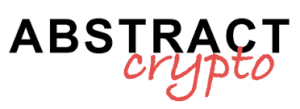Polyhedra Network, in collaboration with EigenLayer and Renzo, has emerged as a pioneering force, introducing innovative solutions that enhance interoperability, security, and economic participation among chains.
At the forefront of this innovation is zkBridge, a revolutionary protocol that facilitates secure and decentralized transmission of messages across different blockchain networks. In the dynamic landscape of blockchain technology, interoperability and security are essential for the smooth operation of decentralized ecosystems.
The collaboration of Polyhedra Network
zkBridge by Polyhedra Network represents a significant step forward in the blockchain sector, offering a decentralized solution for bridging assets across Layer 1 and Layer 2 networks.
The collaboration with EigenLayer and the integration of the Liquid Restaking Token (LRT) ezETH by Renzo further strengthen the capabilities and security of the zkBridge ecosystem. This collaboration is supported by an impressive economic participation of 1.8 billion US dollars, ensuring a solid crypto-economic security.
Bitcoin, despite its importance in the cryptocurrency space, does not have a native smart contract functionality, which poses challenges for its integration into cross-chain ecosystems.
However, zkBridge by Polyhedra Network, in collaboration with EigenLayer and Renzo, offers innovative solutions to securely connect Bitcoin to different blockchain networks. Integrating Bitcoin into zkBridge allows other blockchains to interact securely with Bitcoin, promoting low-trust interoperability.
Thanks to EigenLayer’s double-staking mechanism, zkBridge ensures the economic security of Bitcoin’s active validation services (AVS). Validators, equipped with both ZK tokens and Renzo’s ezETH, play a crucial role in ensuring the network’s integrity. In case of malicious activities, users can initiate zkBridge requests to correct discrepancies, safeguarding the network’s integrity and users’ assets.
The slashing mechanism built into Bitcoin AVS acts as a strong deterrent against fraudulent activities, ensuring the integrity of the network. Through careful monitoring and reporting, users contribute to the detection of harmful behaviors. In case of confirmation, the slashing protocol is executed, leading to the confiscation of stakes by dishonest validators. Furthermore, rewards are distributed to stakeholders and honest users, incentivizing active participation and promoting a robust ecosystem.
Fast purposes for Layer 2 networks
Layer 2 networks offer scalability and high transaction speed, but pose interoperability issues between chains. To solve this problem, zkBridge introduces a fast bridging solution that leverages an auxiliary validation network.
This network attests the state of level 2 networks, ensuring fast finalization while maintaining security levels comparable to native blockchain executions. By simulating blockchain executions, zkBridge achieves fast finalization, significantly reducing transaction finalization time.
The integration of zkBridge with Layer 2 networks involves the verification of state proofs by auxiliary validation networks and the validation of Layer 1 consensus for Layer 2 transactions. Batch proofs are supported to reduce gas costs, improving efficiency and scalability. Through collaboration with EigenLayer, Polyhedra Network introduces dual staking on various blockchains, leveraging ZK tokens for economic security and ecosystem growth.
Renzo’s integration with ezETH enhances the dual staking mechanism, improving economic security and user experience. Renzo’s LRT mechanism incentivizes validators, mitigates risks, and offers liquid restaking capabilities, promoting greater participation and liquidity within the ecosystem. By abstracting complexity and ensuring seamless integration, Renzo enhances the efficiency and security of cross-chain transactions.
Conclusion
The integration of zkBridge, EigenLayer, and Renzo by Polyhedra Network sets a new standard for interoperability, security, and user experience of cross-chains. Thanks to innovative solutions such as zero-knowledge proofs, AVS, and dual staking mechanisms, zkBridge facilitates cross-chain transactions securely and efficiently.
This collaboration opens up new opportunities for decentralized finance and digital asset management, driving the evolution of blockchain technology towards greater scalability, interoperability, and user empowerment. With a constant focus on innovation and security, Polyhedra Network, EigenLayer, and Renzo pave the way for a decentralized future powered by protocols that reduce trust and seamless cross-chain transactions.


